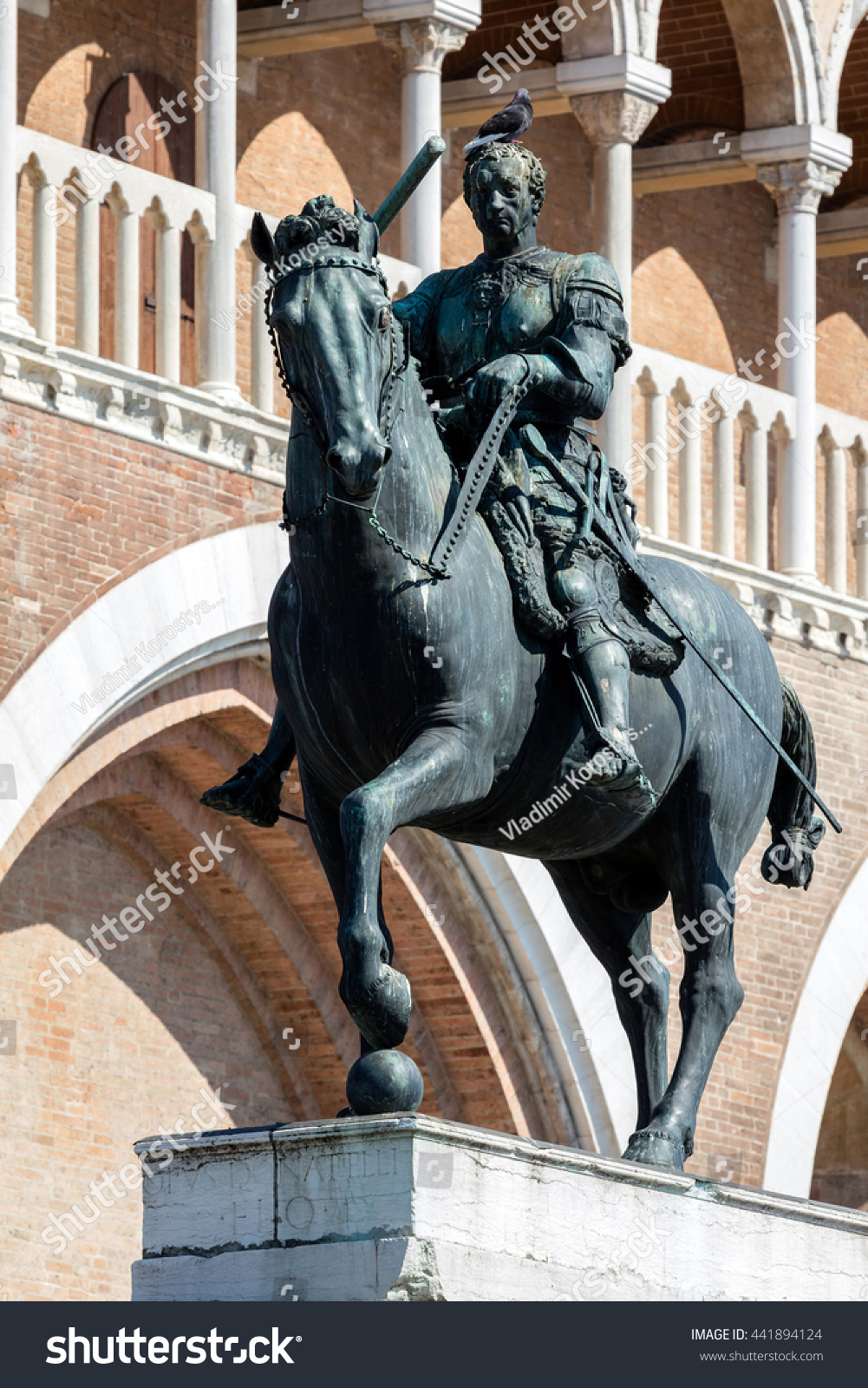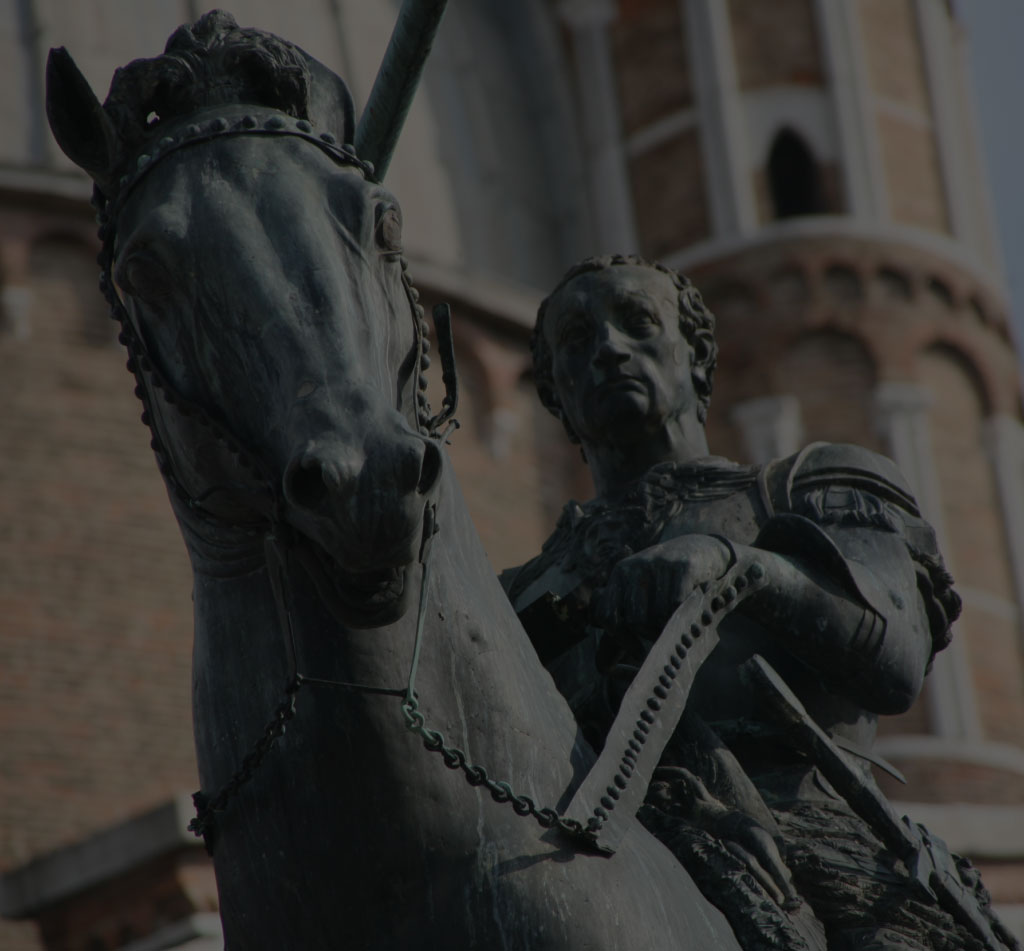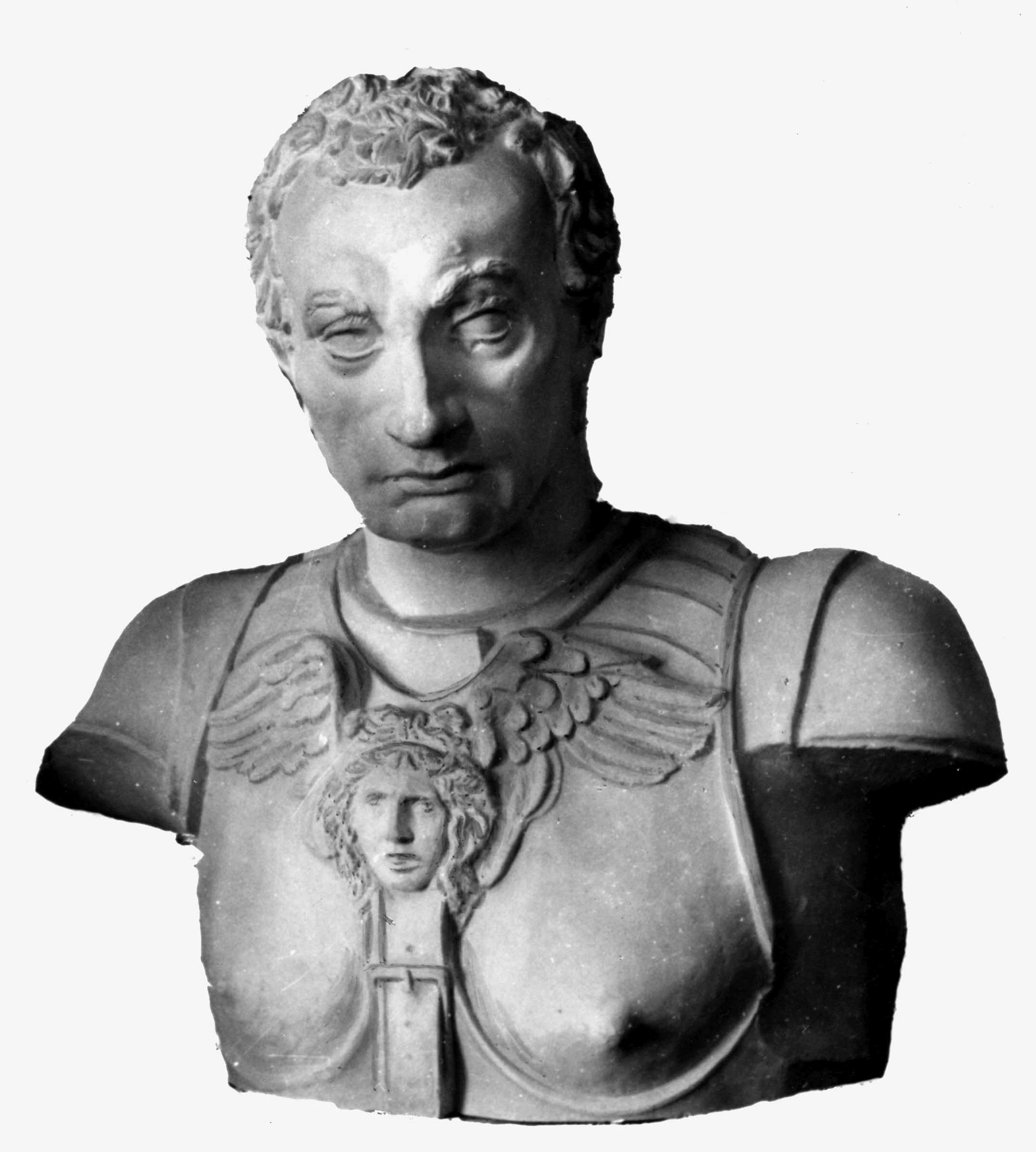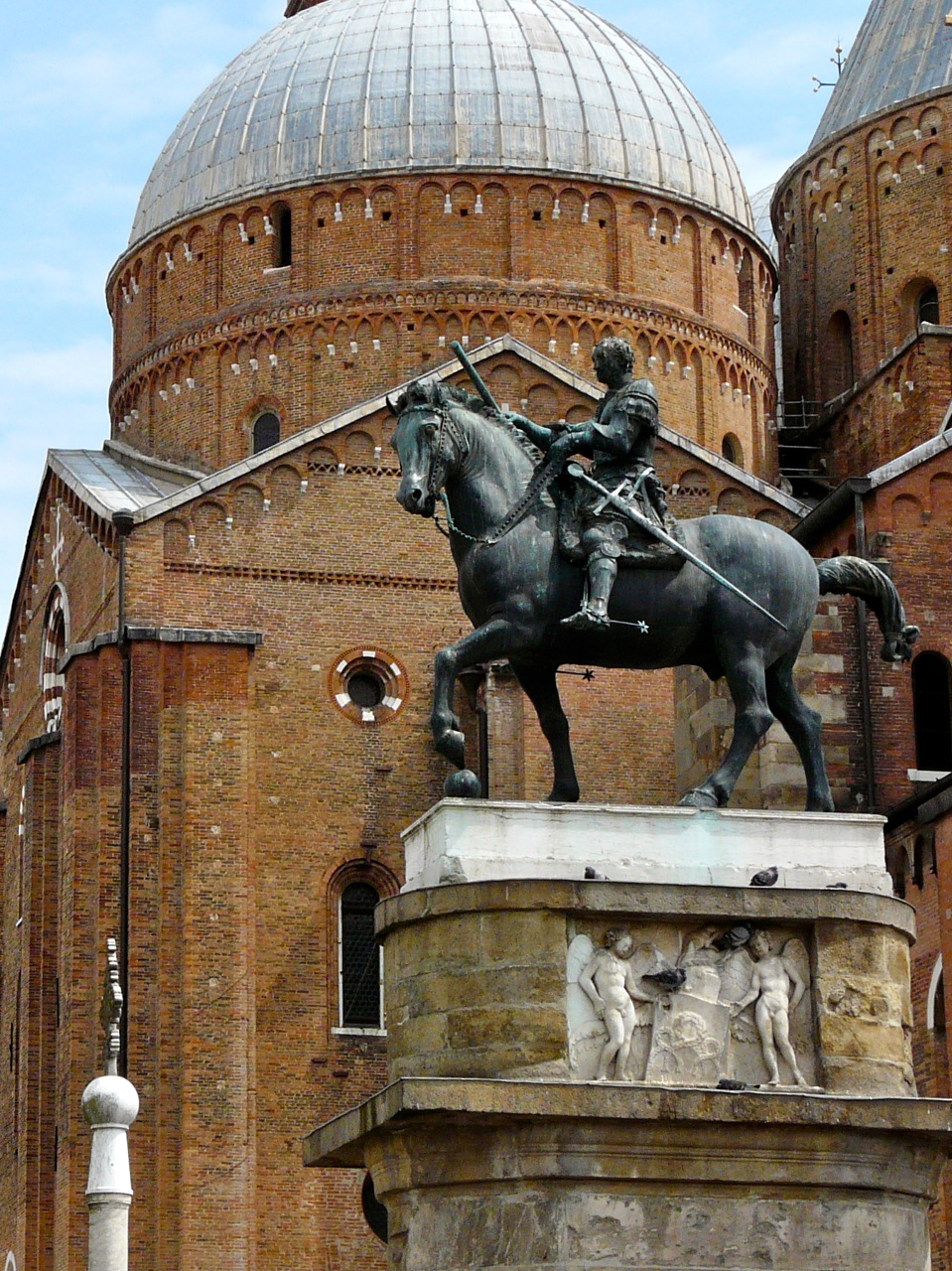
Donatello (1386 1466) Statua equestre, Arte rinascimentale, Equestre
Donatello, Equestrian Monument of Gattamelata (Erasmo da Narni), 1445-53, bronze, 12 feet, 2 inches high, Piazza del Santo, Padua Speakers: Dr. Beth Harris a.

Equestrian Statue of Erasmo da Narni, Donatello, 144353 Renacimiento
The Equestrian Statue of Gattamelata is an Italian Renaissance sculpture by Donatello, dating from 1453, today in the Piazza del Santo in Padua, Italy. It portrays the condottiere Erasmo da Narni, known as "Gattamelata", who served mostly under the Republic of Venice, which ruled Padua at the time. It is the first full-size equestrian statue of the Italian Renaissance.

Equestrian Statue Of The General Gattamelata (Erasmo Da Narni
Erasmo Stefano of Narni , better known by his nickname of Gattamelata , was an Italian condottiero of the Renaissance. He was born in Narni, and served a number of Italian city-states: he began with Braccio da Montone, served the Papal States and Florence, as well as the Republic of Venice in 1434 in the battles with the Visconti of Milan.

Erasmo da Narni e le donne della sua famiglia 1443 Narnia History
Erasmo da Narni, called Gattamelata, bronze equestrian statue by Donatello, 1447-53; in Piazza del Santo, Padua, Italy. Gattamelata, bronze statue of the Venetian condottiere Erasmo da Narni (popularly known as Gattamelata, meaning "honeyed cat") by the 15th-century Italian Renaissance sculptor Donatello.

Equestrian Statue of Gattamelata
A-level: Donatello, Equestrian Monument of Gattamelata. by Dr. Beth Harris and Dr. Steven Zucker. Donatello, Equestrian Monument of Gattamelata (Erasmo da Narni), 1445-53, bronze, 12′ 2″ high, Piazza del Santo, Padua.

Donatello, Equestrian Monument of Erasmo di Narni “Gattamelata
Overview Erasmo da Narni (c. 1370—1443) Quick Reference (c. 1370-1443), "Il Gattamelata," condottiere. Erasmo da Narni was born in Narni in southern Umbria around 1370 of relatively humble parentage: his father was a baker. His contemporary nickname, "Gattamelata,".

Erasmo of Narni Alchetron, The Free Social Encyclopedia
Erasmo da Narni, the subject of Donatello's Gattamelata, was a powerful and illustrious Venetian nobleman and condottiere (mercenary). His military victories were well-known throughout the Italian city-states of the Pre-Renaissance period and his family was well respected.

Donatello Monumento equestre a Erasmo da Narni, detto il Gattamelata
Erasmo Stefano of Narni (1370 - 16 January 1443), better known by his nickname of Gattamelata (meaning "Honeyed Cat"), was an Italian condottiero of the Renaissance.

Portrait XVIIe Gattamelata Erasmo da Narni Condottiere de Nani Gatta
Description: The oldest surviving bronze equestrian statue since antiquity is the statue in Padua of the condotierre Erasmo of Narni (1370-1443), better known with his nickname 'Gattamelatta' (the honeyed cat). His hair was blonde like honey and he was sly as a cat. Donatello sculpted this statue and finalized it in 1453.

Donatello, monumento equestre di Erasmo da Narni detto il Gattamelata
Erasmo da Narni (Gattamelata) primary name: Narni, Erasmo da other name: Erasmo da Narni other name: Gattamelata Details individual; military/naval; Italian; Male. Life dates 1370-1443. Biography Venetian condottiere/general; famous equestrian statue by Donatello in the Piazzo del Santo, Padua..

Equestrian statue of Erasmo da Narni, known as Il Gattamelata , by
Donatello, Equestrian Monument of Gattamelata (Erasmo da Narni), 1445-53, bronze, 12′ 2″ high, Piazza del Santo, Padua More Smarthistory images…

Art of the Renaissance Donatello's sculpture of Erasmo Da Narni
This funny-sounding name was the nickname of Erasmo da Narni, a condottiere (mercenary) who fought for Venice and is the person depicted riding the horse. Normally, equestrian statues could legally only depict rulers, which Erasmo was not.

MONUMENTO EQUESTRE AL GATTAMELATA Donatello statua celebrativa di
Detail Erasmo da Narni (Gattamelata) sits high on his horse, looking out to the distance. The emotion on his face is serious. Donatello portrays Gattamelata as a composed, alert and watchful leader. The depiction of force of character and the reference to the power of real people flows with the Renaissance themes of individualism and humanism.

Erasmo da Narni, genannt Gattamelata OnlineKatalog der Gipsformerei
Erasmo da Narni, called Gattamelata, was a condottiere, or leader of mercenary troops, who rose to a position of importance. The statue is an idealization of nature in both horse and rider and a reinterpretation of antiquity.

The statue is honoring Erasmo da Narni ( Gattamelata). Description from
Donatello executed two works in Padua--the high altar for Sant'Antonio with bronze reliefs and this bronze equestrian statue, a commemorative monument for the recently deceased Venetian condottiere, Erasmo da Narni (nicknamed Gattamelata or "honeyed [or cunning] cat," a reference to his Mother's name, Melania Gattelli). This monument, set on a high marble base, is in front of Sant'Antonio, the.

Equestrian statue of (Gattamelata) Narni in Padua Italy
by Nina Aldin Thune. published on 25 August 2020. Download Full Size Image. A detail of the bronze sculpture known as the Gattamelata by the Italian Renaissance sculptor Donatello (c. 1386-1466 CE). Created c. 1443 CE, the subject is the mercenary leader Erasmo da Narni (1370-1443 CE) and it stands in Piazza di San Antonio of Padua, Italy.